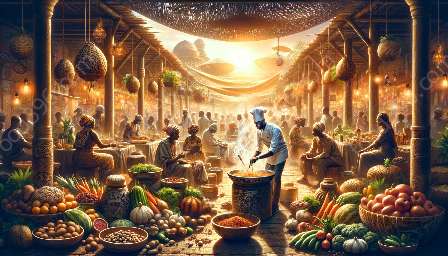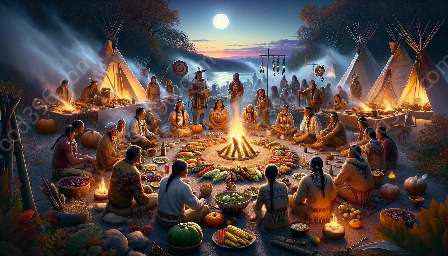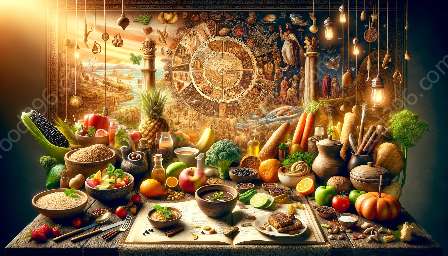Native American cuisine history is a vibrant tapestry woven from the diverse cultures and traditions of indigenous peoples across North America. From the rich bounty of wild game and foraged plants to the enduring legacy of ancient cooking techniques, the culinary heritage of Native American tribes reflects a deep connection to the land and a reverence for the natural world.
The Origins: Traditional Ingredients and Preparation Methods
The history of Native American cuisine stretches back thousands of years, shaped by the ingenuity and resourcefulness of the first inhabitants of the continent. Traditional ingredients such as maize (corn), beans, squash, wild berries, and game meats formed the cornerstone of indigenous diets, providing a rich tapestry of flavors and nutritional sustenance. The cultivation of the 'Three Sisters'—corn, beans, and squash—embodied the harmonious relationship between different plant species, a sustainable agricultural practice that continues to resonate in modern farming movements.
Native American cooking methods also highlight the resourcefulness of indigenous cultures. From the use of earth ovens and stone boiling to smoking and drying techniques, these time-honored practices reveal a deep understanding of the land and its seasonal cycles, emphasizing the preservation of food for sustenance throughout the year.
Impact of European Settlers: Culinary Exchange and Adaptations
The arrival of European settlers in North America brought about significant changes to the indigenous foodways, marking the beginning of a complex culinary exchange. The introduction of new ingredients such as wheat, livestock, and various spices, along with the adoption of European cooking techniques, reshaped the landscape of Native American cuisine. Influences from African, Asian, and European culinary traditions further enriched the indigenous culinary heritage, leading to the emergence of new culinary fusions and flavor profiles.
While this period of exchange often resulted in the marginalization and loss of traditional food practices, many Native American communities adapted and integrated foreign ingredients and cooking methods, incorporating them into their culinary repertoire. Through this process of adaptation and resilience, indigenous cuisine continued to evolve, preserving its roots while embracing new influences.
Revival and Innovation: Modern Adaptations and Indigenous Food Movement
In recent years, there has been a resurgence of interest in traditional Native American cuisine, driven by a growing movement to reclaim and celebrate indigenous food culture. Chefs, activists, and food enthusiasts have been at the forefront of this culinary revival, showcasing the depth and diversity of indigenous culinary heritage through innovative, contemporary interpretations.
Indigenous ingredients and cooking techniques have found a renaissance in modern kitchens, as chefs and home cooks alike seek to honor the legacy of Native American cuisine while infusing it with a fresh, creative energy. From revitalizing ancient recipes and reviving heirloom varieties to promoting sustainable foraging and traditional agricultural practices, the indigenous food movement has become a catalyst for preserving and elevating the culinary traditions of Native American tribes.
Exploring Native American Cuisine Today: Flavorful Discoveries and Stories
Today, exploring Native American cuisine offers a window into the diverse flavors, stories, and cultural traditions of indigenous communities. From the earthy warmth of cedar-planked salmon and the comforting aroma of frybread to the vibrant colors of succotash and the complex flavors of wild rice dishes, each culinary creation reflects a deep connection to the land and a reverence for the natural world.
As more people embrace the rich tapestry of Native American cuisine, there is a growing appreciation for the stories and traditions woven into each dish. Beyond the flavors and aromas, indigenous food culture carries with it a profound narrative of resilience, adaptation, and cultural continuity, inviting diners to savor not only the food but also the history and heritage behind each bite.




















